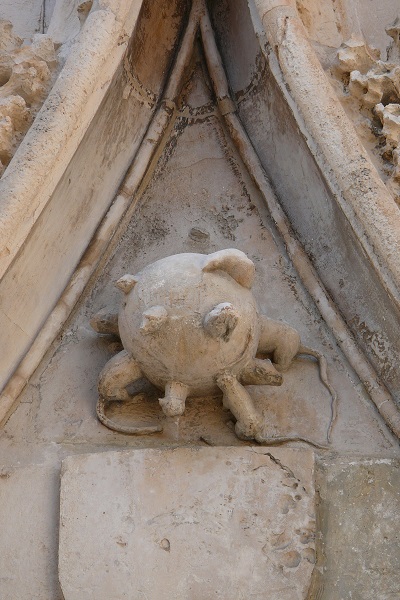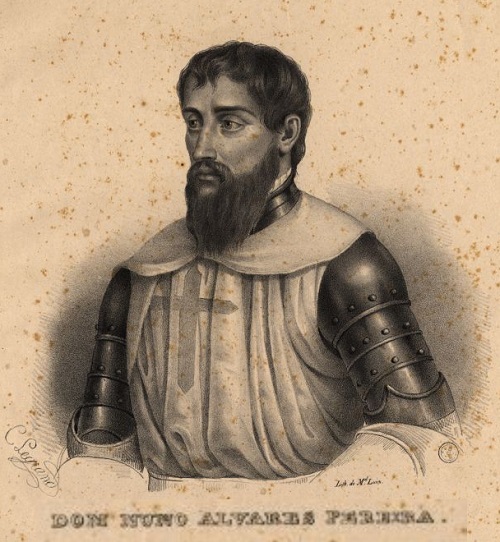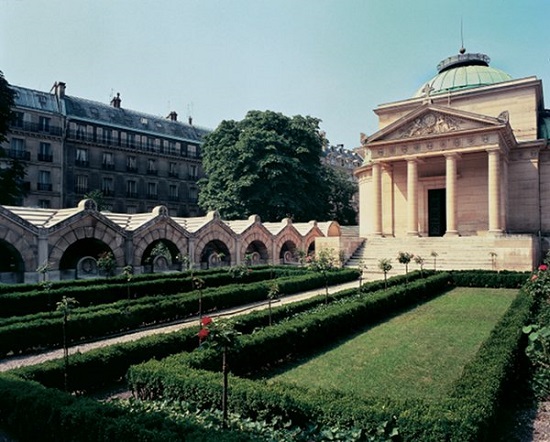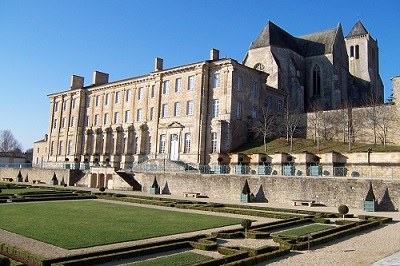On show at the Museu Nacional de Arte Antiga (National Museum of Ancient Art) in Lisbon, Nuno Gonçalves’ polyptych (comprising two large panels and four narrower ones) is a masterpiece of Portuguese painting from the end of the Middle Ages and the beginning of the Renaissance. It’s creator, Nuno Gonçalves, royal artist for Dom Afonso V from 1450 onwards, is believed to have died in 1492.
It is said that the polyptych, of a rather sober but strongly realistic style, was painted at the Paço Real (Royal Palace) of Sintra. It was not discovered until 1882, when Rafael Bordalo Pinheiro and his sister realized that workers were using it as scaffolding during restoration work on the patriarchate of São Vicente de Fora. They saved it from destruction without delay and began to restore it. However, it was not until 1931, when the work was exhibited in Paris, that Nuno Gonçalves won the international recognition he deserved. In a superb, yet enigmatic manner, the polyptych illustrates the entire Lusitanian epic of the Avis dynasty. The 60 figures portrayed in the work have given rise to endless debates regarding their identification and placement, as well as the correct order of the panels.
The first panel is that of the Monks, shown dressed in the attire of the Cistercian Order, and the second, that of the Navigators, which shows Crown Prince Henrique kneeling at the front. In the centre of the third panel, that of the Pontiff, is a saint that resembles the Coptic and Byzantine representations of Prester John (Melkitzedek), King of Salem (representing heaven on earth) and Priest of the God Most High (representing the celestial paradise), and not, as some biblical scholars have claimed, Saint Vincent, Saint Catherine, the Crown Prince Dom Ferdinand, or the Cardinal of Lisbon, James of Portugal. As in the scriptures, the saint is shown with the Gospel of Saint John open at the Pentecostal mass,
The same saint is found on the fourth panel, the Monarch panel, holding the King of the World’s sceptre, the ropes at his feet outline a map of Portugal. The fifth panel is that of the Knights, and the sixth that of the Relic, showing a bone from the skull of Saint Anthony of Lisbon and Padua.
Sixty figures are portrayed in all: 6 in the first panel, 7 in the second, 34 in the third and fourth, 8 in the fifth, and 5 in the sixth. According to ancient Kabbalistic numerology, the number 60 represents Evolution. By dividing it by the double 3, and ignoring the zero that represents the abstract or nothingness, one obtains the Holy Trinity on earth and in the heavens and towards which all living things strive.
Two other numbers are 13 (illustrated in the number of figures portrayed in the first two and the last two panels) and 17 (the number of figures in each of the central panels). The number 13 symbolizes the Immortality of the human soul after death. It is also the number that is traditionally attributed to Saint Mary and the Holy Spirit, to whom Portugal is dedicated.
The number 17 symbolizes the hope for Immortality that the Word of God (as revealed in the open copy of the Gospel of Saint John) transmits to the congregation or, in other words, all of humanity. The number 17 also has special meaning for Portugal. It is its own esoteric arcanum and designates the country as the ultimate hope for a new global spiritual empire.
(Adapted from Secret Lisbon by Vitor Manuel Adrião, published by JonGlez)











